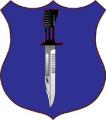Product Description
The conflict in Iraq is characterized by three faces of war: interstate conflict, civil war, and insurgency. The Coalition’s invasion of Iraq in March 2003 began as an interstate war. No sooner had Saddam Hussein been successfully deposed, however, than U.S.-led forces faced a lethal insurgency. After Sunni al Qaeda in Iraq bombed the Shia al-Askari Shrine in 2006, the burgeoning conflict took on the additional element of civil war with sectarian violence between the Sunni and the Shia.
The most effective strategies in a war as complicated as the three-level conflict in Iraq are intertwined and complementary, according to the editors of this volume. For example, the “surge” in U.S. troops in 2007 went beyond an increase in manpower; the mission had changed, giving priority to public security. This new direction also simultaneously addressed the insurgency as well as the civil war by forging new, trusting relationships between Americans and Iraqis and between Sunni and Shia. This book has broad implications for future decisions about war and peace in the twenty-first century.
About the Author
Heather S. Gregg is an assistant professor at the Naval Postgraduate School’s department of defense analysis. Dr. Gregg is a contributing author of the RAND reports Beyond Al Qaeda (2006) and After Saddam: Prewar Planning and the Occupation of Iraq (2008).
Hy S. Rothstein is a senior lecturer of defense analysis at the Naval Postgraduate School. He served in the U.S. Army as a Special Forces officer for more than twenty-six years. He is the author of Afghanistan and the Troubled Future of Unconventional Warfare (Naval Institute Press, 2006).
John Arquilla is a professor of defense analysis at the Naval Postgraduate School. He is the author of Networks and Netwars: The Future of Terror, Crime, and Militancy, with David Ronfeldt (RAND, 2002), and Worst Enemy: The Reluctant Transformation of the American Military (National Book Network, 2008).












Bookmarks